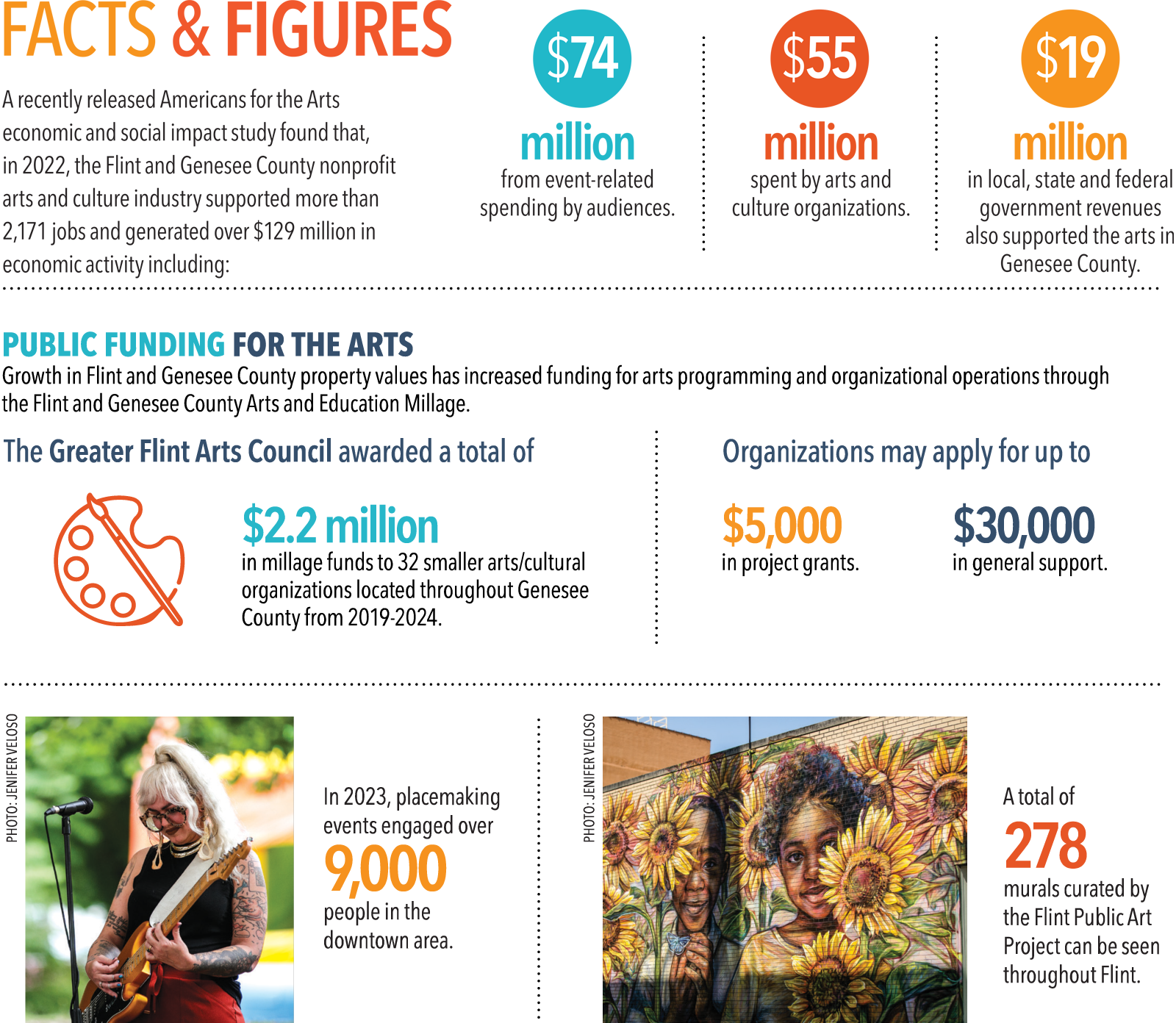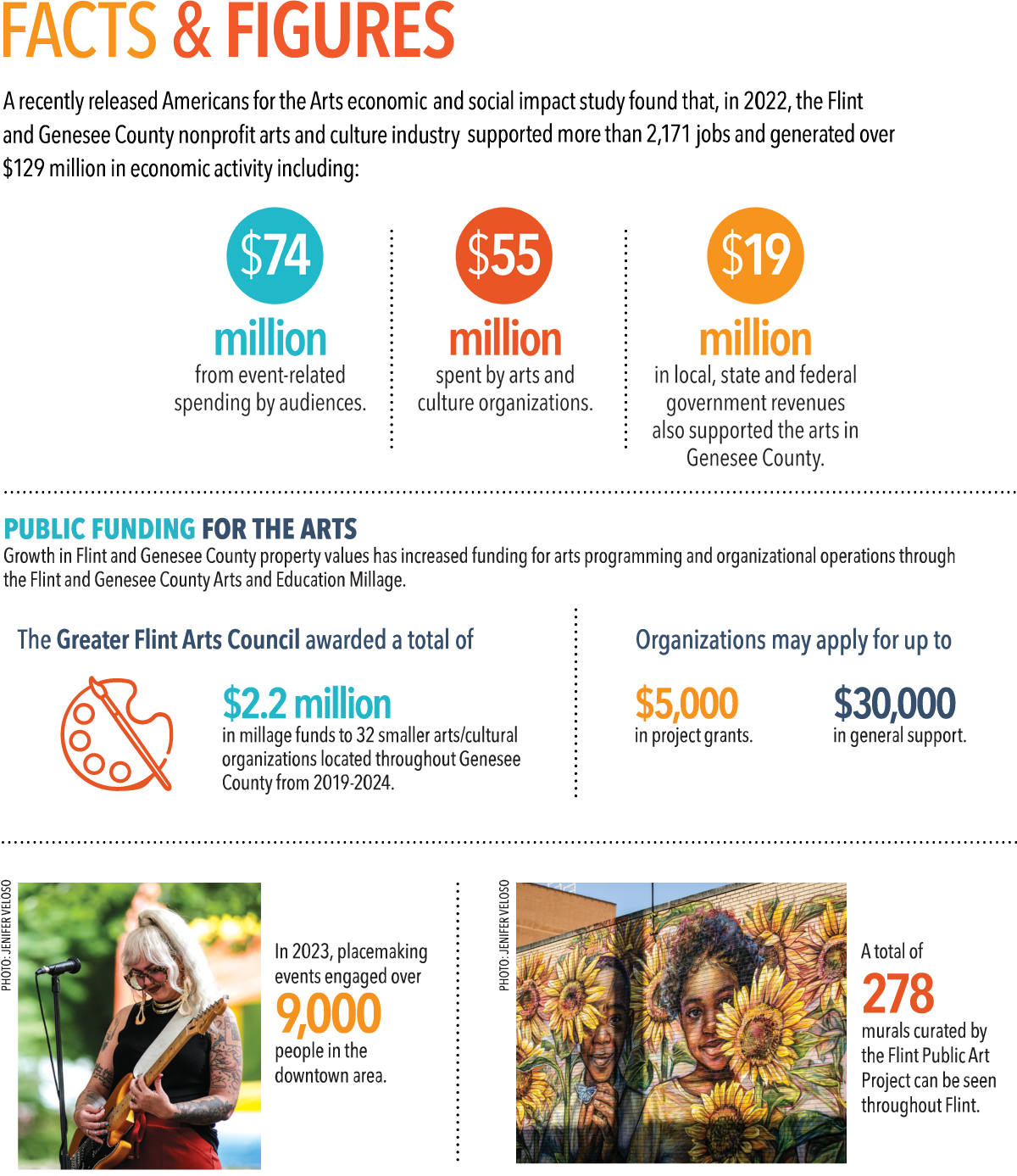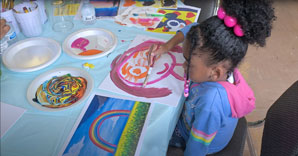“The important thing that I’ve learned is how to be open to so many different cultures and how to be loving to the community. I think it is super important to teach others how to express themselves through rhythm and music.”
— LaCresia Brown, Tapology participant

THE ISSUE
Young people who participate in dance, music, theater or visual arts programs report higher self-esteem and often improve academic achievement. Many schools are lacking arts-related classes or extracurricular activities, which has impacted early exposure to enriching opportunities. Many arts and cultural programs in Flint are offered for free, at low cost or through scholarships for participants of all ages. However, these opportunities are still not accessible for everyone due to: transportation needs; competing priorities, such as afterschool jobs; and lack of awareness.
THE RESPONSE
Many local organizations provide access to the arts through community theater, fashion shows, concerts, visual arts showcases, dance programs, pop-up entertainment events and art education. Downtown festivals celebrating our community and its diversity take place nearly every weekend from May to October and attract tens of thousands of residents and visitors to downtown Flint.
Flint is also home to the Flint Cultural Center, a community gem that is unique in a city the size of Flint. In fiscal year 2023, the cultural center campus organizations served nearly 650,000 people. Those institutions — Flint Institute of Arts, Flint Institute of Music (including FIM Whiting Auditorium, FIM Capitol Theatre, Flint Repertory Theatre and Flint School of Performing Arts), Sloan Museum of Discovery and Longway Planetarium — offer a broad range of experiences.
Events such as the Second Friday Art Walk in downtown Flint and festivals along Saginaw Street in the warmer months are often free. Tuition-based programs and summer camps, such as those at the Flint School of Performing Arts or Sloan Museum, offer scholarships for individuals and financial and transportation support for schools and community groups to participate.
Additionally, organizations such as El Ballet Folklórico Estudiantil, Tapology, New McCree Theatre, Greater Flint Arts Council, Buckham Gallery, Flint Public Art Project and many more offer programming and a supportive environment to learn and grow in the arts.




DID YOU KNOW?
The Community Foundation of Greater Flint’s Neighborhoods Small Grants Program provides mini grants to neighborhood groups and block clubs to support activities around the city. The Mott Foundation has been a longtime supporter of the NSGP, having made an initial grant of $80,000 in 1990. Since 2019, the Mott Foundation has granted $270,000 to CFGF for neighborhood-based arts and cultural programs, such as summer art camps, festivals and events. To learn more about this program, go to www.cfgf.org.

